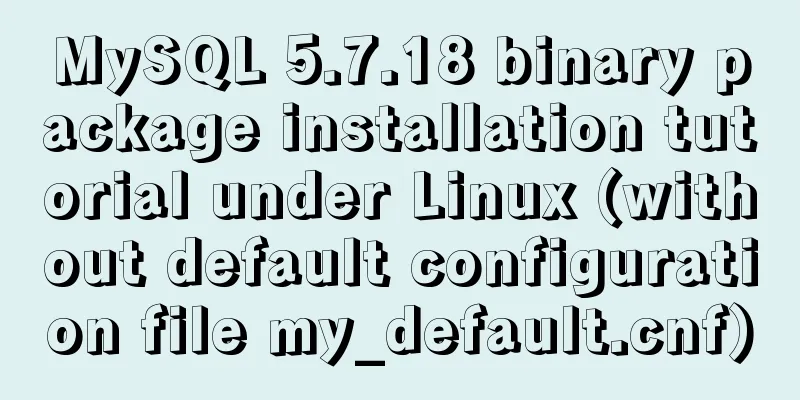How to configure MySQL master-slave synchronization in Ubuntu 16.04

|
Preparation 1. The master and slave database versions should be consistent 2. Data in the master and slave databases remain consistent Primary database: 121.199.27.227 /ubuntu 16.04 MySQL 5.7.21 (Alibaba Cloud) From database: 182.254.149.39 /ubuntu 16.04 MySQL 5.7.21 (Tencent Cloud) Firewall Configuration Configure the master server to allow only specific IP addresses to access the database port to avoid unnecessary attacks. Main database firewall configuration # iptables -A INPUT -p tcp -s slave_ip --dport 3306 -j ACCEPT #Delete any existing configuration to avoid multiple duplicate records $ sudo iptables -D INPUT -p tcp -s 182.254.149.39 --dport 3306 -j ACCEPT $ sudo iptables -D INPUT -p tcp -s 127.0.0.1 --dport 3306 -j ACCEPT $ sudo iptables -D INPUT -p tcp --dport 3306 -j DROP $ sudo iptables -D INPUT -p udp --dport 3306 -j DROP $ sudo iptables -D INPUT -p sctp --dport 3306 -j DROP #Add configuration to allow only specific addresses to access the database port $ sudo iptables -A INPUT -p tcp -s 182.254.149.39 --dport 3306 -j ACCEPT $ sudo iptables -A INPUT -p tcp -s 127.0.0.1 --dport 3306 -j ACCEPT $ sudo iptables -A INPUT -p tcp --dport 3306 -j DROP $ sudo iptables -A INPUT -p udp --dport 3306 -j DROP $ sudo iptables -A INPUT -p sctp --dport 3306 -j DROP $ sudo iptables -L -n #Save configuration $ sudo apt-get install iptables-persistent $ sudo netfilter-persistent save #The configuration is saved in the following two files: /etc/iptables/rules.v4 /etc/iptables/rules.v6. #It is best to confirm the actual saved content, especially if other security software such as denyhosts is installed. #Redundant rules may be recorded and need to be manually deleted from the library firewall configuration# iptables -A OUTPUT -p tcp -d master_ip --dport 3306 -j ACCEPT #Delete any existing configuration to avoid multiple duplicate records$ sudo iptables -D OUTPUT -p tcp -d 121.199.27.227 --dport 3306 -j ACCEPT #Add configuration$ sudo iptables -A OUTPUT -p tcp -d 121.199.27.227 --dport 3306 -j ACCEPT $ sudo iptables -L -n #Save configuration $ sudo apt-get install iptables-persistent $ sudo netfilter-persistent save #The configuration is saved in the following two files: /etc/iptables/rules.v4 /etc/iptables/rules.v6. #It is best to confirm the actual saved content, especially if other security software such as denyhosts is installed. #Redundant rules may be recorded and need to be deleted manually Master database master configuration 1. Modify mysql configuration $ sudo vim /etc/mysql/mysql.conf.d/mysqld.cnf Modify the [mysqld] section as follows: [mysqld] log-bin = /var/log/mysql/mysql-bin.log #Open binary log. It is commented out by default. We remove the comments. server-id = 1 #Set server-id bind-address = 0.0.0.0 #The default is 127.0.0.1. Here we set it to any address to allow remote access. Before doing this, make sure the firewall is configured correctly, otherwise there will be security risks. 2. Restart MySQL and create a user account for synchronization Create a user and authorize: User: repl Password: slavepass $ sudo service mysql restart $ mysql -u root -p -e "CREATE USER 'repl'@'182.254.149.39' IDENTIFIED BY 'slavepass';" #Create user$ mysql -u root -p -e "GRANT REPLICATION SLAVE ON *.* TO 'repl'@'182.254.149.39';" #Assign permissions$ mysql -u root -p -e "flush privileges;" #Refresh permissions 3. Check the master status and record the binary file name (mysql-bin.000001) and location (333802): $ mysql -u root -p -e "SHOW MASTER STATUS;" Enter password: +------------------+----------+--------------+------------------+-------------------+ | File | Position | Binlog_Do_DB | Binlog_Ignore_DB | Executed_Gtid_Set | +------------------+----------+--------------+------------------+-------------------+ | mysql-bin.000001 | 333802 | | | | +------------------+----------+--------------+------------------+-------------------+ 4. Backup the master database to prepare data for the first data synchronization of the slave database Use the following script to generate a database backup file #Here we take the backup of wordpress database as an example datadump=`which mysqldump` mysqluser="root" userpass="password" wordpressdb="wordpress" backupwordpress_sql=$wordpressdb.`date +%Y%m%d`.sql if $datadump -u $mysqluser --password=$userpass -h localhost --opt $wordpressdb > $backupwordpress_sql 2>&1 then echo " backup $wordpressdb success" else echo " backup $wordpressdb error" exit 1 fi #Check whether there is "-- Dump completed on" at the end of the file. If it does not exist, it means that the backup has failed. if [ 0 -eq "$(sed '/^$/!h;$!d;g' $backupwordpress_sql | grep -c "Dump completed on")" ]; then echo " backup $wordpressdb error" exit 1 else echo " backup $wordpressdb success" fi Execute the script to ensure that the final output backup is successful $ cd ~ $ sudo bash backup_wordpress.sh Slave server configuration 1. Modify mysql configuration $ sudo vim /etc/mysql/mysql.conf.d/mysqld.cnf Modify the server-id. The server-id of each database must be unique and cannot conflict with each other. [mysqld] server-id = 2 #Set server-id, must be unique log_bin = /var/log/mysql/mysql-bin.log #It is also best to open the log 2. Restore the database for the first time: $ sudo service mysql restart $ scp -P 22 -r [email protected]:~/wordpress.*.sql ./ #Delete a possible warning line that may prevent us from recovering data. $ sed -i "/^mysqldump: \[Warning\] Using a password on the command line interface can be insecure\./d" wordpress.*.sql $ mysql -u root -p -e "drop database wordpress;" $ mysql -u root -p -e "create database wordpress;" $ mysql -u root -p wordpress < wordpress.*.sql 3. Restart MySQL, open a MySQL session, and execute the synchronization SQL statement (requires the host name of the primary server, login credentials, and the name and location of the binary file): $ mysql -u root -p -e "CHANGE MASTER TO MASTER_HOST='121.199.27.227', MASTER_USER='repl', MASTER_PASSWORD='slavepass', MASTER_LOG_FILE='mysql-bin.000001',MASTER_LOG_POS=333802;" 4. Start the slave synchronization process: $ mysql -u root -p -e "start slave;" 5. Check the slave status:
$ mysql -u root -p -e "show slave status\G;"
Enter password:
*************************** 1. row ***************************
Slave_IO_State: Waiting for master to send event
Master_Host: 121.199.27.227
Master_User: repl
Master_Port: 3306
Connect_Retry: 60
Master_Log_File:mysql-bin.000001
Read_Master_Log_Pos: 9448236
Relay_Log_File: VM-114-251-ubuntu-relay-bin.000002
Relay_Log_Pos: 17780
Relay_Master_Log_File: mysql-bin.000001
Slave_IO_Running: Yes
Slave_SQL_Running: No
Replicate_Do_DB:
Replicate_Ignore_DB:
Replicate_Do_Table:
Replicate_Ignore_Table:
Replicate_Wild_Do_Table:
Replicate_Wild_Ignore_Table:
...When Slave_IO_Running and Slave_SQL_Running are both YES, it means that the master-slave synchronization setting is successful. Next, you can perform some verifications. For example, insert a piece of data into a table in the test database of the master database, and check whether there is new data in the same data table of the slave's test database to verify whether the master-slave replication function is effective. You can also shut down the slave (mysql>stop slave;), and then modify the master to see if the slave is also modified accordingly (after stopping the slave, the master's changes will not be synchronized to the slave), and the master-slave replication function can be verified. Other related parameters that can also be used: After the master opens the binary log, operations on all tables in all libraries are recorded by default. You can configure it to only record operations on a specified database or even a specified table. Specifically, you can add and modify the following options in the [mysqld] section of the MySQL configuration file: # Which databases are not synchronized? binlog-ignore-db = mysql binlog-ignore-db = test binlog-ignore-db = information_schema # Only synchronize certain databases, other than these, do not synchronize other databases binlog-do-db = game For example, when checking the master status before, you can see that only the test library is recorded, ignoring the manual and mysql libraries. Summarize The above is the configuration method of MySQL master-slave synchronization in Ubuntu 16.04 introduced by the editor. I hope it will be helpful to everyone. If you have any questions, please leave me a message and the editor will reply to you in time. I would also like to thank everyone for their support of the 123WORDPRESS.COM website! You may also be interested in:
|
<<: How to change the terminal to a beautiful command line prompt in Ubuntu 18
>>: Docker and portainer configuration methods under Linux
Recommend
Problems encountered when installing mysql8.0.15 winx64 on Win10 and connecting to the server
1. Download, install and configure mysql-8.0.15 1...
Detailed Example of MySQL curdate() Function
MySQL CURDATE Function Introduction If used in a ...
Sharing of research experience on using characters instead of rounded corners and sharp corners
1. The relationship between fonts and character d...
Syntax alias problem based on delete in mysql
Table of contents MySQL delete syntax alias probl...
How to connect to MySQL visualization tool Navicat
After installing Navicat The following error may ...
Vue implements setting multiple countdowns at the same time
This article example shares the specific code of ...
A brief discussion on MySQL large table optimization solution
background The amount of new data in the business...
Solutions to invalid is Null segment judgment and IFNULL() failure in MySql
MySql Null field judgment and IFNULL failure proc...
Detailed explanation of the difference between chown and chmod commands in Linux
In Linux system, both chmod and chown commands ca...
Detailed explanation of html printing related operations and implementation
The principle is to call the window.print() metho...
How to add a certificate to docker
1. Upgrade process: sudo apt-get update Problems ...
How to manage users and groups when running Docker
Docker is a management tool that uses processes a...
How to implement navigation function in WeChat Mini Program
1. Rendering2. Operation steps 1. Apply for Tence...
CSS3 analysis of the steps for making Douyin LOGO
"Tik Tok" is also very popular and is s...
Analysis of the advantages of path.join() in Node.js
You might be wondering why you should use the pat...









